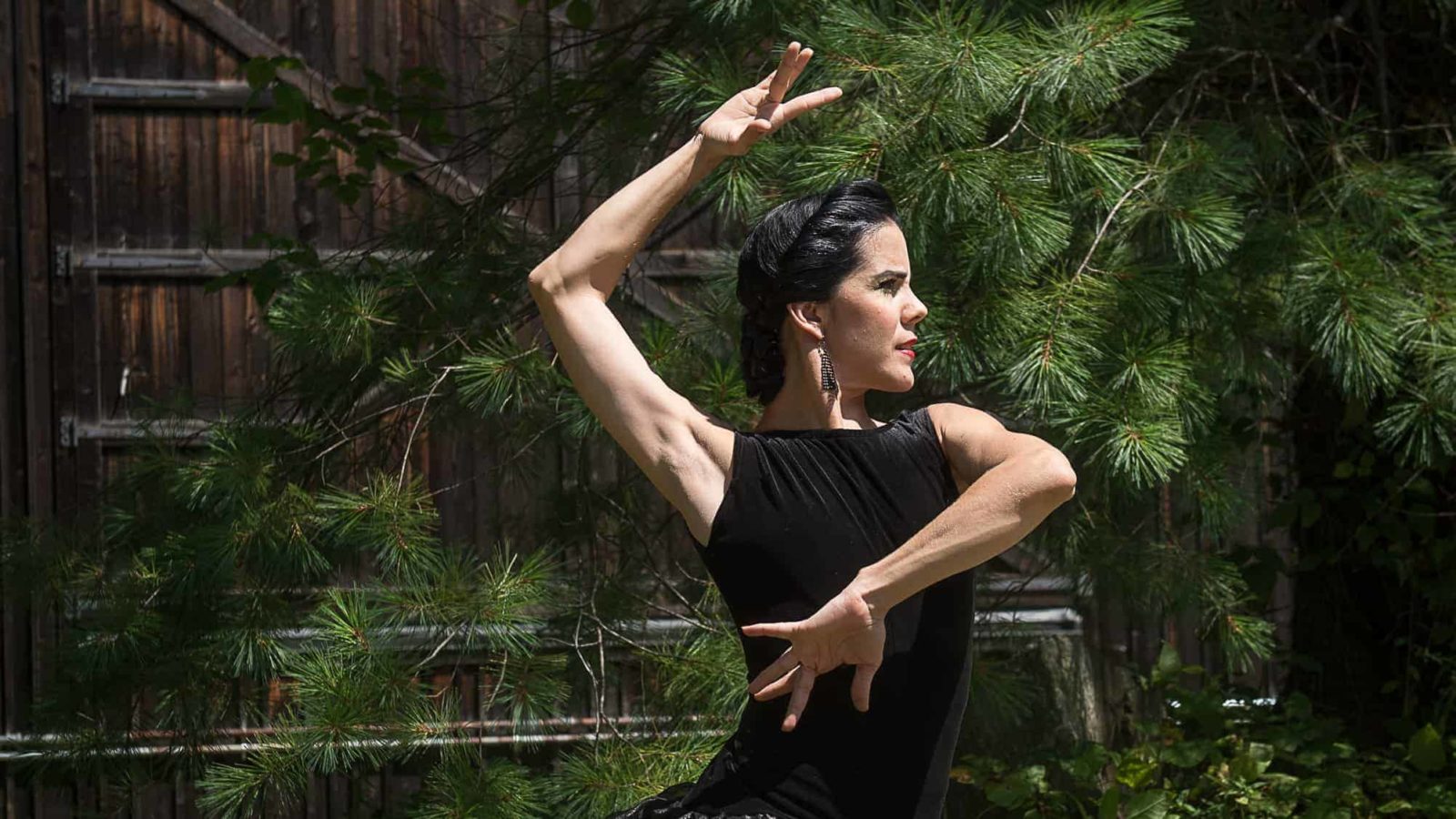A woman walks down a mountain at sunrise, when the slopes are still dark around the rocks. Voices are singing to her:
Roosters pick like axes
and dig into the dawn …
Amber copper, her body,
with the scent of horses and shadow.
Irene Rodríguez performs her own melding of flamenco, Afro-Cuban rhythm and contemporary movement, with live musicians on saxophone, percussion, bass and guitar.
An internationally acclaimed dancer and choreographer — artistic director of the International Festival The Footprint of Spain, Ensayadora choreographic adviser with the National Ballet of Cuba — she will return with her company Jacob’s Pillow International Festival of Dance from June 26 to 30, for their first performance in the Ted Shawn Theatre, with two world premieres and new and recent works, including Pena Negra, inspired by Federico Garcia Lorca.
“I’m very passionate about Federico Garcia Lorca’s artwork and poems,” she said, talking by phone from Cuba. She has created many dances there from his works and performed
in Granada
“When you face a personality like his, it is so amazing,” she said. “His poems, everything he wrote.”
In Pena Negra, she becomes the woman at the core of the poem, Soledad Montoya, walking alone at night and shaking with longing like a high held note.
“I love this poem,” she said. “It is a very deep poem, talking about Soledad. Her name means isolation. This lady can’t find real love — she does not have it yet, and she is looking for that in her life.”
In her choreography, Rodríguez wears a long black gown, bata de cola, the dress flamenco dancers traditionally wear, with a full and trailing skirt. This one is so full that her company can dance with it, like falling water.
Her company and her musicians weave singing and guitar, percussion with feet and hands and body, and patterns in rhythms and chords.
Lorca brings the rhythms of the dance into his words. His work represented within it the pain of the gitano, she said, the Roma or Romani people or calé, who have lived for centuries in Andalusia, in Southern Spain. In his songs and stories, he holds all they have lived through and endured, and the sound and sense of flamenco.
Flamenco has roots in Andalusia and in Romani music and dance.
“Contemporary flamenco is very dramatic,” Rodríguez said. “When you see it, you can understand, all these styles act together. You can’t separate them. And in contemporary flamenco, you have to be an actor, because you can’t represent a poem like this, trying to express the solitude she feels, without acting.”
She sees Soledad in the middle of her life.
“She has entered into her 40s, or her 60s maybe, and has not found real love in her life, and youth is over, and she is scared about losing it. That’s why in the poem she is moving from the bedroom to the kitchen. Because one is a man and woman’s place together, and at that time the kitchen was a woman’s place.”
In other works, man and woman intertwine, as in Encierro.
“I’m really in love with this choreography,” Rodríguez said.
It is one of her most recent works, inspired by a town in the Basque country, in the moment when they drive the bulls from the place where they are raised to the arena.
“Usually there are 12 bulls,” she said. “Six are brave, and six are softer. And when they come to the plaza de toros, and they choose the bulls for the bull fights, the torrero knows what bull he will fight.”
That moment of recognition is intense, sensitive and frightening.
“Death is over the campus,” she said. “Death is over the arena. Sometimes the bull dies, and sometimes the torrero, but always someone dies. It is important to Spanish culture. Some people are against it, and some people love it. You will see how painful it is for the bull. Sometimes you can identify with the bull.”
As she performs, she will become the bull about to be killed — the animal known for strength, embodied in a woman. That is important, she said, that convergence and expression of power.
She will also take on the role of a man — of a soul in pain — in El Grito, inspired by Edvard Munch’s painting, The Scream.
“From the painting, you don’t know whether the scream comes from inside him or outside, whether he is blocking out the sound of it, or whether he is screaming. He is covering his ears, so he will not hear anything else. He’s so scared of nature and everything around him. You can see the sky, the clouds, and they have movement. the sound is so strong, it moves everything.”
That impressionist painting is also expressing a dark pain, pena negra. It touches an idea central to flamenco and difficult to translate — the sense of duende.
“Lorca used to talk about duende a lot,” she said. “… There are not many words to explain it, but if you see it, you will identify it. It’s mysterious. Passionate. It’s something you bring from when you were born; it’s impossible to learn how to do it, or to work on it. You have it — or not. You feel it when you’re in front of it, facing it, in a dancer or a writer like Lorca. It’s the soul of flamenco.”
“The duende is a power,” Lorca wrote, “not a work; it is a struggle, not a thought. I have heard an old maestro of the guitar say, ‘the duende is not in the throat; the duende climbs up inside you from the soles of the feet.’ Meaning this, it is not a question of ability, but of true, living style, of blood …”

